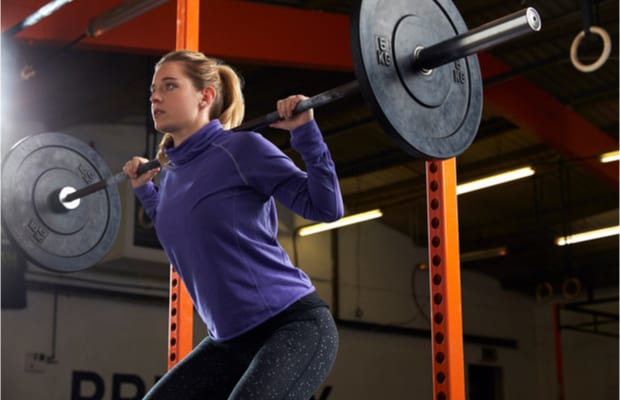
Within the fitness industry, special attention is directed toward female members to ensure obstacles such as intimidation or discomfort around men in the weight room are impeded.
Some facilities created remote fitness spaces or removed mirrors to mitigate feelings of competition. Eliminating intimidation and encouraging inclusivity is a sensitive topic within our department. Creating an inclusive, welcoming and stress-free environment is important to our staff and any indication that students feel marginalized or unwelcome ignites our team, and we attempt to mitigate the obstacle to the best of our ability. Recently, a request came to get more women into the weight room, so I wanted to look deeper into this topic and find out if women want to be in the weight room.
As a woman who has participated in group fitness classes, played intramural sports, belayed rock walls, swam laps and lifted weights in weight rooms where few women were found, I began to challenge the assumption that women wanted to be in the weight room. Similar to other women, I have experienced feelings of intimidation, competition and feeling that I am on display in the weight room. And indeed, the majority of weight rooms I’ve visited — main-stream fitness centers across the United States as well as the US Army and Air Force gyms in the U.S. and in Germany — were dominated by men. Most often I was the only woman in the weight room but I seldom asked myself, “Where are all the other women?” This space has always felt masculine and if I wanted to join my female counterparts, I would jump into a group fitness class.
Aerobic spaces, in contrast, has remained feminine since their induction into the fitness industry. Aerobic and group fitness locations were originally created outside of gyms as aerobics studios, fitness salons or women-only exercise studios. But today, we see the contemporary gym and recreation center now has it all: aerobics and group fitness classes are now in a combined recreational facility with weight rooms, functional training areas, rock walls, pools, day cares and more. This is an incredible evolution since YMCAs came into existence in the mid-nineteenth century and the first U.S. health club opened in 1939 (1). Gyms have historically been labeled as masculine spaces. From Greco-Roman gyms to the strong man gyms of nineteenth century Europe, today’s version of the public gym has advanced drastically in terms of inclusive participants and programming.
Let’s also consider how “having muscle” is perceived differently by women. While musculature can be perceived as evidence of competence, different variations of muscle size provide different versions of femininity to different women. Many women desire slender toned bodies and equate the weight room as a place to bulk up and, therefore, exercise in areas outside of the weight room. Knowledge of lifting weights is held predominantly by men, and many women who do lift weights gained knowledge either through a trainer or past sports experience (2). Women who actively and confidently lift weights in the weight room, including the presence of female personal trainers, disrupt the knowledge gap between men and women in the weight room.
Women’s presence in the weight room provides access and knowledge to other women, but we should also highlight that our staff, students and recreational programming is evidence of inclusive design. At our student recreation center, half of our personal trainers are women, 85% of our group fitness instructors are women, and all of our fitness programming is created and developed by women. Our department professional staff consists of over 60% women, and our student facility usage is nearly equal between men and women. In addition, fitness industry trends in functional training, HIIT and overall wellness programs — which our department adopted — reflect a movement toward activities that show equal interest in both men and women.
When we look at the creation of the majority of group fitness classes, workout routines, equipment and apparel, the fitness industry is dominated by men. Reactive tactics to steer women into spaces women have traditionally bypassed cannot reverse behavior that is innately part of the original system. A broader look and a larger conversation needs to take place about how we are part of the evolution of a new system. Let’s talk about spaces, how it contributes to positive experiences and how these spaces construct positive identities. Our involvement, development and influence within the fitness industry is and must continue encouraging inclusivity to all people.
Women might not be equally present in all activities or spaces such as in the weight room, but our presence, encouragement and behavior as recreation professionals will continue to reduce the gender gap. Developing strategies that encourage all of our members the ability to personalize their fitness experiences and freedom, however they feel comfortable, is important and must continue.
1 Evolution of the Fitness Industry. (n.d.). A Brief History of the Public Gym. Retrieved from http://www.clubready.club/blog/evolution-of-the-fitness-industry-a-brief-history-of-the-public-gym
2 Newhall, Kristine E.. (2013). “Is this Working Out?: A Spatial Analysis of Women in the Gym.” PhD (Doctor of Philosophy) thesis, University of Iowa, 96. Retrieved from http://ir.uiowa.edu/etd/2594.










